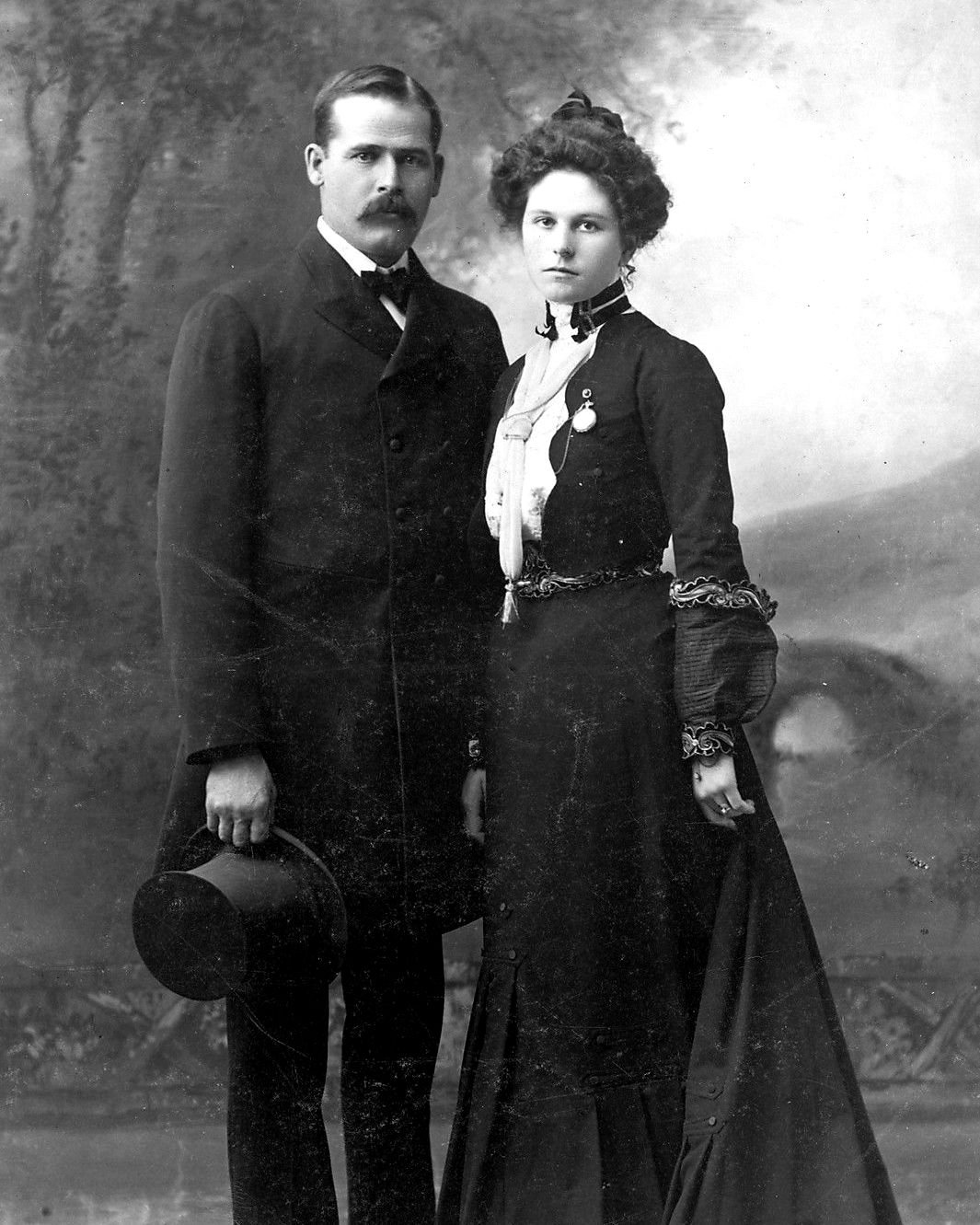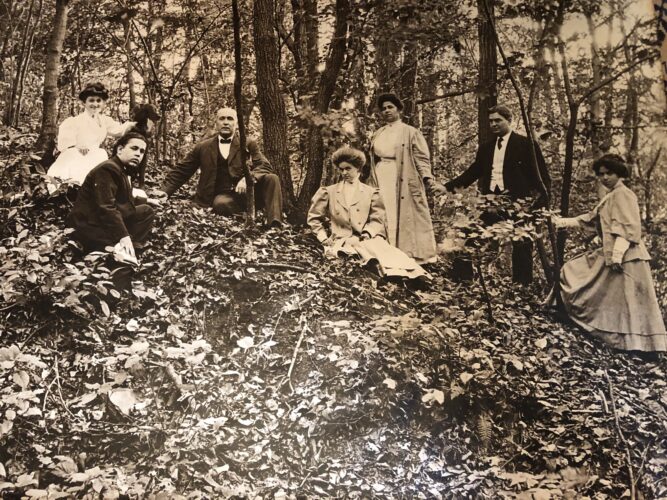
Okay, here’s a 1200-word journalistic article about Etta Place, focusing on her enigmatic life and the enduring mystery surrounding her.
Etta Place: The Vanishing Enigma of the Wild West
Her name whispers through the annals of the American West, a fleeting melody in a violent symphony of train robberies and bank heists. Etta Place. For over a century, she has remained an elusive phantom, a beautiful, well-dressed woman caught in the whirlwind lives of Butch Cassidy and the Sundance Kid. While her male counterparts carved their names into legend with bullets and bravado, Etta Place etched hers with absence, leaving behind a tantalizing trail of mystery that continues to captivate historians and romantics alike.

Who was Etta Place? The question echoes across dusty plains and through the dense jungles of South America, yielding no definitive answer. No birth certificate, no childhood records, no definitive gravesite marks her passage. She simply materialized, a figure born of myth and rumor, beside Harry Alonzo Longabaugh – the Sundance Kid – and then, just as suddenly, vanished.
The Enigmatic Arrival: A Portrait in Paradox
The most concrete piece of evidence of Etta Place’s existence is a single, iconic photograph taken in Fort Worth, Texas, in 1901. Standing beside Butch Cassidy, Sundance, and two other members of the notorious Wild Bunch (Ben Kilpatrick and Harvey Logan), Etta is a striking anomaly. Unlike the hardened, weather-beaten men surrounding her, she exudes an air of refined elegance. Her dark dress is fashionable, her hat adorned with a feather, and her gaze, steady and almost challenging, hints at an inner strength beneath her delicate features. She appears poised, almost serene, a stark contrast to the dangerous lives her companions led.
This image, captured before the infamous gang’s departure for South America, is more than just a photograph; it’s a portal into a fleeting moment of an extraordinary life. It raises immediate questions: How did a woman of such apparent cultivation become entangled with the West’s most wanted outlaws? Was she a willing participant, drawn by the thrill and the men she loved, or a captive of circumstances, swept along by forces beyond her control?
The theories about her origins are as varied as they are unsubstantiated. Some speculate she was a schoolteacher from Texas, seduced by the allure of the outlaw life. Others suggest she was a prostitute, perhaps from Fannie Porter’s infamous Fort Worth brothel, where the Wild Bunch often sought refuge. Another intriguing, albeit less likely, theory links her to Ann Bassett, a feisty rancher from Brown’s Hole, Colorado, who was known to have romantic ties to Butch Cassidy. Regardless of her past, what is clear is that Etta Place was no ordinary woman. She was a skilled horsewoman, adept at riding and shooting, and possessed a quiet intelligence that belied her gentle appearance.
The Grand Escape: A New World, Old Habits
In 1901, with Pinkerton detectives hot on their heels and the American West closing in around them, Butch Cassidy, Sundance, and Etta Place embarked on a daring escape. They traveled by train to New York City, where they posed as a wealthy couple and visited the Waldorf-Astoria Hotel. It was a brief, luxurious interlude before they boarded the British steamer Herminius, bound for Argentina.
This transatlantic journey, a desperate bid for a fresh start, highlights another facet of Etta’s character. She wasn’t just a camp follower; she was an integral part of their plan, a sophisticated front for their outlaw identities. Her presence lent an air of respectability, allowing them to blend into society in ways two rough-and-tumble cowboys never could have managed alone.

In Argentina, they attempted to reinvent themselves. In the remote Cholila Valley of Patagonia, they purchased a ranch and tried to live a legitimate life. For a brief period, it seemed they might succeed. Letters home to friends and family in the States spoke of their newfound prosperity and the beauty of their surroundings. Etta, it is said, adapted well to the ranching life, enjoying the freedom and the solitude.
But the lure of the old life, or perhaps the sheer inability to escape their true natures, proved too strong. The money ran out, the ranch proved unprofitable, and the thrill of a settled existence faded. Soon, reports of English-speaking bandits robbing banks and trains began to surface across Argentina, then Bolivia. The "Texas Outlaws," as they became known, were back in business.
The Fading Figure: Etta’s Retreat
The narratives surrounding Etta’s departure from South America are perhaps the most poignant and debated aspects of her story. In 1904, Etta Place, accompanied by Sundance, returned to the United States. The reason for their journey is unclear. Some accounts suggest Etta was ill and needed medical attention, possibly for appendicitis or another ailment. Others believe she had simply grown tired of the dangerous, nomadic life and yearned for a return to civilization and safety.
Sundance escorted her back to New York City, where he reportedly left her with money and promises to return, before heading back to South America to rejoin Butch Cassidy. This is the last verified sighting of Etta Place. She stepped off a ship, walked into the bustling anonymity of early 20th-century New York, and disappeared.
The Enduring Mystery: Where Did She Go?
What became of Etta Place after her return to the United States? The question has haunted historians and armchair detectives for decades, spawning a myriad of theories, none of which have ever been definitively proven.
The Pinkerton National Detective Agency, which had tirelessly pursued the Wild Bunch for years, continued their efforts to track Etta. Their reports, meticulous yet ultimately fruitless, offer tantalizing clues. One popular theory, supported by some Pinkerton files, suggests she returned to Texas. A woman named Eunice Gray, who ran a brothel in Fort Worth, was said to resemble Etta and claimed to be her. She lived a long life, dying in 1962, but never definitively confirmed her identity as Etta Place.
Another compelling theory centers on Della Rose, a woman who lived in the Fort Worth area and was associated with some of the Wild Bunch’s acquaintances. She was known to be an attractive, intelligent woman and died in 1950, taking her secrets with her. While a strong candidate, no concrete evidence links Della Rose unequivocally to Etta Place.
Other less credible stories abound: that she died in a shootout in Bolivia alongside Sundance and Cassidy (though historical evidence strongly suggests she had already left South America by then); that she returned to a quiet life in the American West under an assumed name, living out her days in peaceful anonymity; or that she remarried and started a new family, leaving her outlaw past behind completely.
The frustrating truth is that all leads eventually go cold. Etta Place, whether by design or by the sheer randomness of fate, successfully shed her identity and slipped into the shadows, never to be positively identified again.
Her Legacy: A Silhouette in History
More than just a footnote in the story of Butch Cassidy and the Sundance Kid, Etta Place represents something far more profound. She is a symbol of the closing of the American frontier, a woman caught between two worlds: the untamed wilderness and the encroaching modernity. Her elegance and mystery stand in stark contrast to the brutal realities of outlaw life, making her a uniquely captivating figure.
Her story speaks to the universal human desire for escape and reinvention, for a second chance in a new land. It also underscores the inherent dangers and ultimate futility of trying to outrun one’s past. For Butch and Sundance, their attempt at a peaceful life in Argentina ultimately failed, leading them back to a violent end. For Etta, her retreat from that life allowed her a different, albeit equally mysterious, fate.
In an era when women were often relegated to domestic roles or seen primarily as extensions of the men in their lives, Etta Place stands out. She was not merely a passive accessory; she was a capable, intelligent woman who played an active, albeit quiet, role in one of the most famous outlaw sagas in history. Her presence complicated the narrative, adding a layer of romance and intrigue to an otherwise purely masculine tale of crime and pursuit.
Etta Place remains a haunting silhouette against the backdrop of the Wild West, a beautiful enigma whose true identity and ultimate fate are lost to the sands of time. Her story reminds us that history is not always a series of neatly tied-up facts, but often a tapestry woven with threads of truth, speculation, and an enduring human fascination with the unanswered question. And perhaps, that is precisely why her legend endures – because some mysteries are simply too beautiful to solve.


